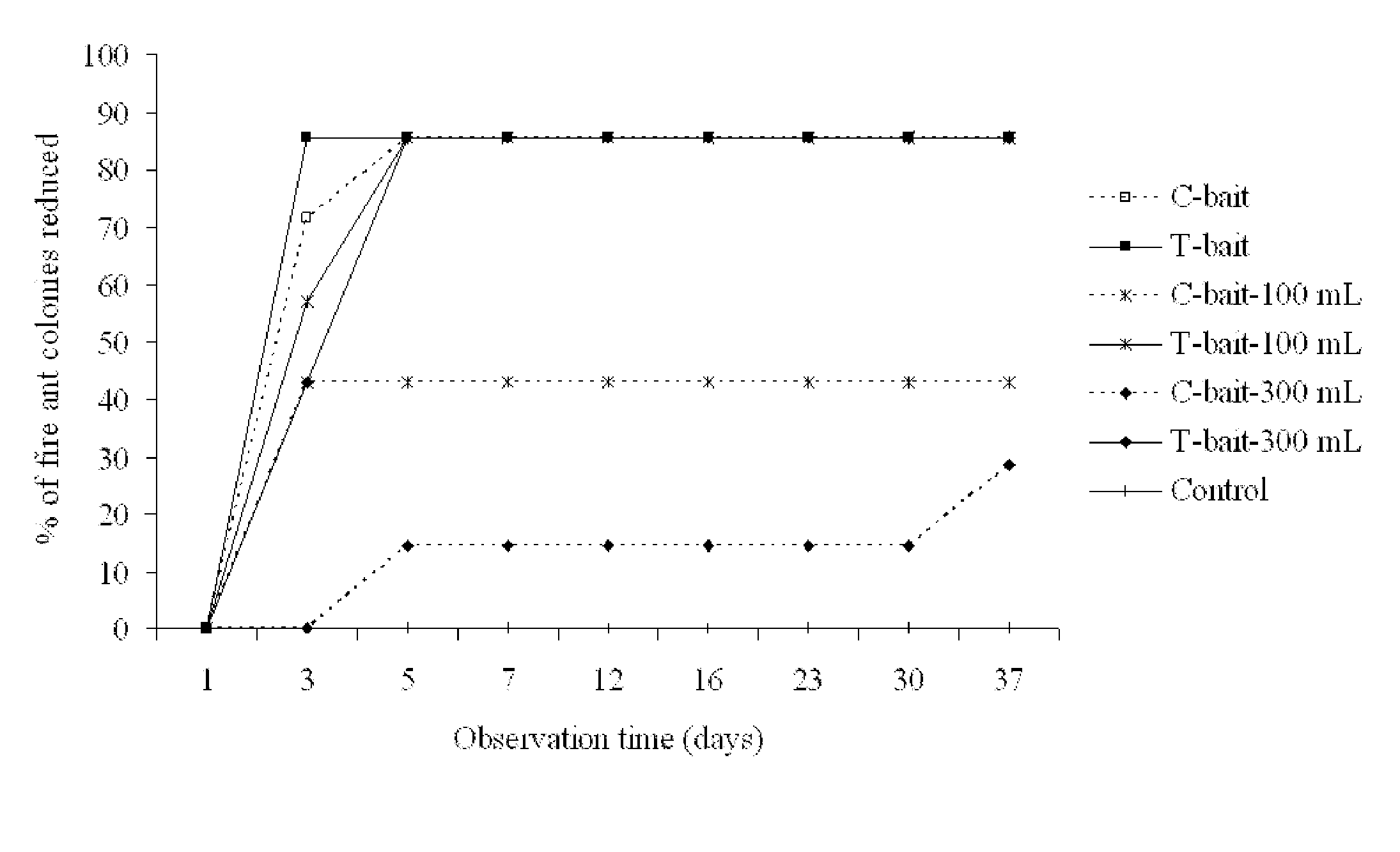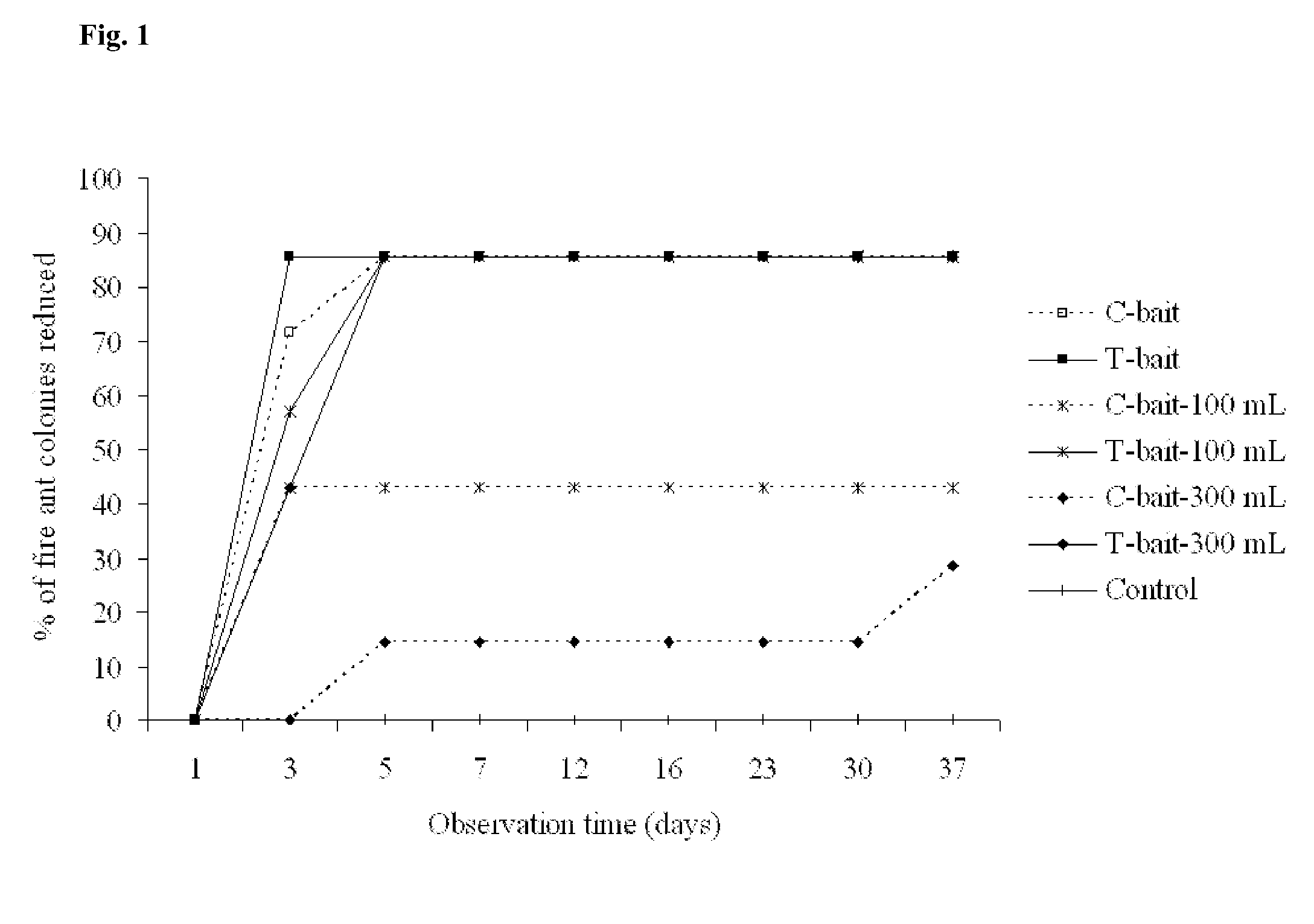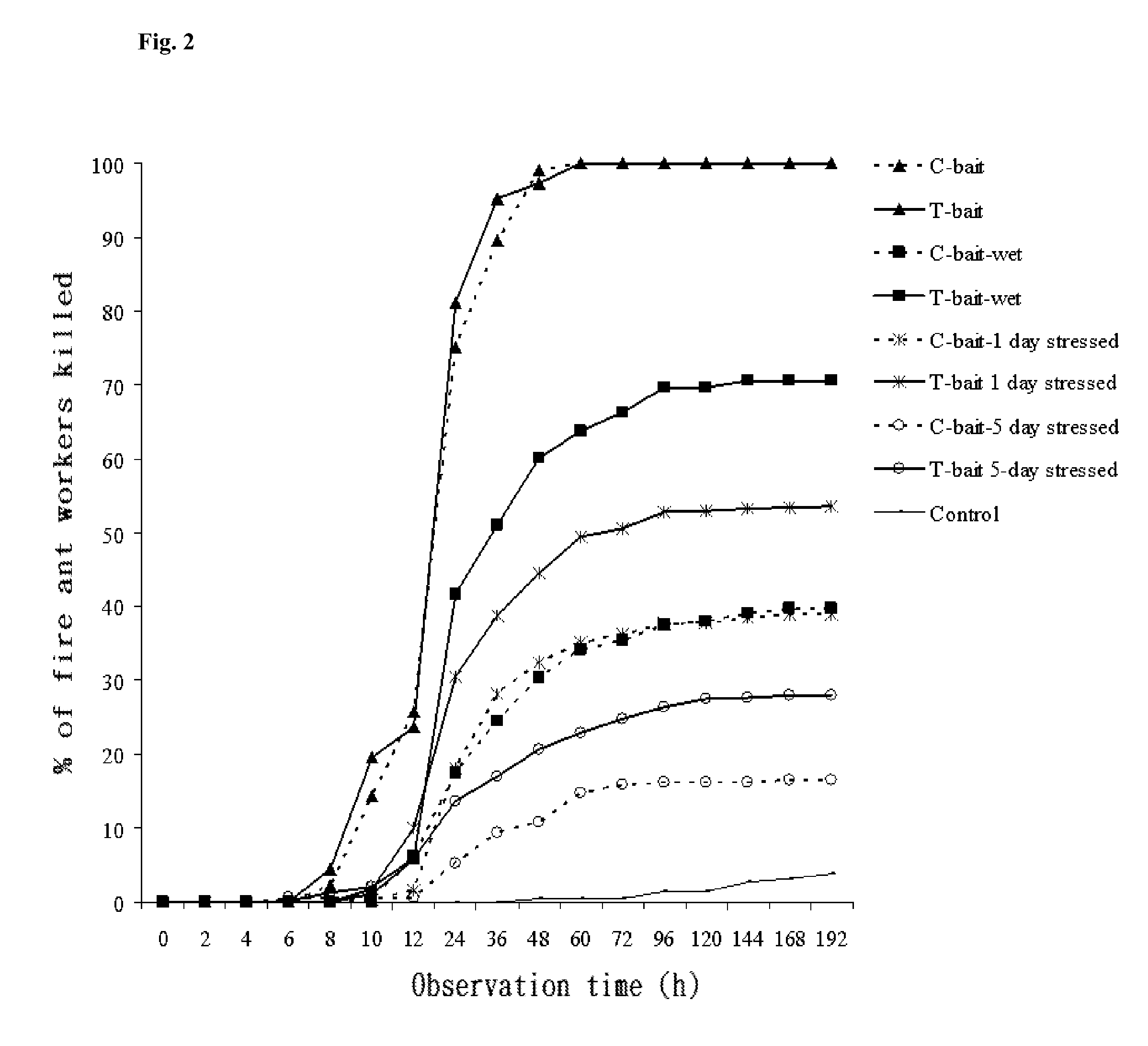Bait for humid regions
- Summary
- Abstract
- Description
- Claims
- Application Information
AI Technical Summary
Benefits of technology
Problems solved by technology
Method used
Image
Examples
example 1
T-bait (Cypermethrin) Preparation
T-carrier
[0019]To prepare T-bait, distiller's dried grains with solubles (DDGS) was used as a carrier (T-carrier) bought from a local market. The DDGS was first screened through a laboratory sieve with a #9 mesh (2 mm) followed by a #12 mesh (1.4 mm) to end up with standard sized particles of ˜2 mm (Furman, B. D. et al., Sociobiology 48: 309-333, 2006). The screened DDGS particles were then stored in the refrigerator for future use. The DDGS are the dried residue remaining after the starch fraction of corn is fermented with selected yeasts and enzymes to produce ethanol and carbon dioxide. After complete fermentation, the alcohol is removed by distillation and the remaining fermentation residues are dried.
Toxicants
[0020]The cypermethrin (94%) obtained from a local chemical company (Chung Shi Chemical Plant, Hsinchu, Taiwan) was used as the toxicant in the present invention. A stock solution of 2% AI was prepared by mixing 1.08 mL cypermethrin (94%) w...
example 2
Efficacy of T-Bait (0.128% Cypermethrin) and C-Bait in the Laboratory
C-bait
[0024]The Commercial Bait (C-Bait), “Advion” (Indoxacarb 0.045% Ai) (Dupont Professional Products, USA) used in this invention was obtained from the National Red Imported Fire Ant Control Center, Taiwan.
Source of S. invicta
[0025]Solenopsis invicta colonies were collected from Hsinchu County, Taiwan, separated from the soil by water drip method (Chen J, Insect Sci. 14: 1-4, 2007), and reared under laboratory conditions as described by Kafle et al. for at least one week prior to conducting the experiments Kafle et al. (Kafle et al., Appl. Entomol. Zool. 43: 383-390, 2008; Kafle et al., Formosan Entomol. 29: 51-58, 2009). Laboratory ants were starved 2 days prior to the experiment to ensure that their mid-gut was empty and that they were hungry enough to search for food (Furman et al., Sociobiology 48: 309-333, 2006).
Foraging Area, Nest Preparation and Bait Placement
[0026]A rectangular artificial foraging area,...
example 3
Efficacy of Wet T-Bait (0.128% Cypermethrin) and C-Bait in the Laboratory
Preparation of Wet Baits
[0031]A 50 mL test tube was modified by making a 3 mm dia. hole in the centre of the tube and four 2 mm dia. holes in the bottom of the tube. T-bait or C-bait (ca. 1 g) was transferred to the modified tube, then capped well and turned upside down. After that, 15 mL of DD-water was injected through the hole made in the centre of the tube. The water was kept in the tube for 30 min. After 30 min, the tube was turned right side up again and placed in a test tube rack allowing the water to drain out through the four holes made at the bottom for 15 min. Then the wetted baits were used to determine their toxicity to the fire ants.
Method of Evaluating the Efficacy of Wet T-Bait (0.128% Cypermethrin) and Wet C-bait in the Laboratory
[0032]The method of evaluating the efficacy in the laboratory was the same as Example 2, but the T-bait (Cypermethrin) and C-bait were replaced with wet T-bait (0.128%...
PUM
 Login to view more
Login to view more Abstract
Description
Claims
Application Information
 Login to view more
Login to view more - R&D Engineer
- R&D Manager
- IP Professional
- Industry Leading Data Capabilities
- Powerful AI technology
- Patent DNA Extraction
Browse by: Latest US Patents, China's latest patents, Technical Efficacy Thesaurus, Application Domain, Technology Topic.
© 2024 PatSnap. All rights reserved.Legal|Privacy policy|Modern Slavery Act Transparency Statement|Sitemap



